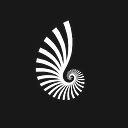Member-only story
By Elise Knutsen
If such a thing is possible, 1921 was a good year in the leprosy unit at Kalihi Hospital in Honolulu. Hundreds of patients who had been rounded up, quarantined, and exiled to the Hawaiian leprosy center were actually showing progress after receiving a new treatment.
“The morale of the patients in the hospital is excellent and in striking contrast to that of former days when a leperous person was doomed to a long term of isolation, in most cases to be terminated only by death,” observed the U.S. Surgeon General’s annual report that year.
The treatment, engineered in the chemistry laboratory at the University of Hawaii, was known as the Dean Method after Dr. Arthur Dean, president of the university.
The Dean Method, however, is not Dean’s at all. The key research behind the treatment was conducted by Alice Ball, a brilliant African American chemist whose name has been all but scrubbed from the history of medicine.
Alice Augusta Ball was born in 1892 in Seattle, the daughter of Laura Howard Ball, a photographer, and J.P. Ball, a prominent lawyer and newspaper editor. “It cannot be denied that our people, through force of circumstance, occupy a peculiar status in this country. We are not thoroughly known,” wrote Ball in the first issue of his newspaper, the Colored Citizen. Sadly, his words would be markedly germane to the life of his daughter.
After excelling in the sciences throughout high school, Alice Ball graduated from the University of Washington in 1914 with degrees in both chemistry and pharmacy. Out of the 237,000 residents in Seattle when Ball enrolled at UW, only 2,200 were African American. The vast majority of them were relegated to work as domestic servants, waiters, and elevator attendants for their white peers.
Overcoming prevailing prejudices which cast women and non-whites as intellectually…
